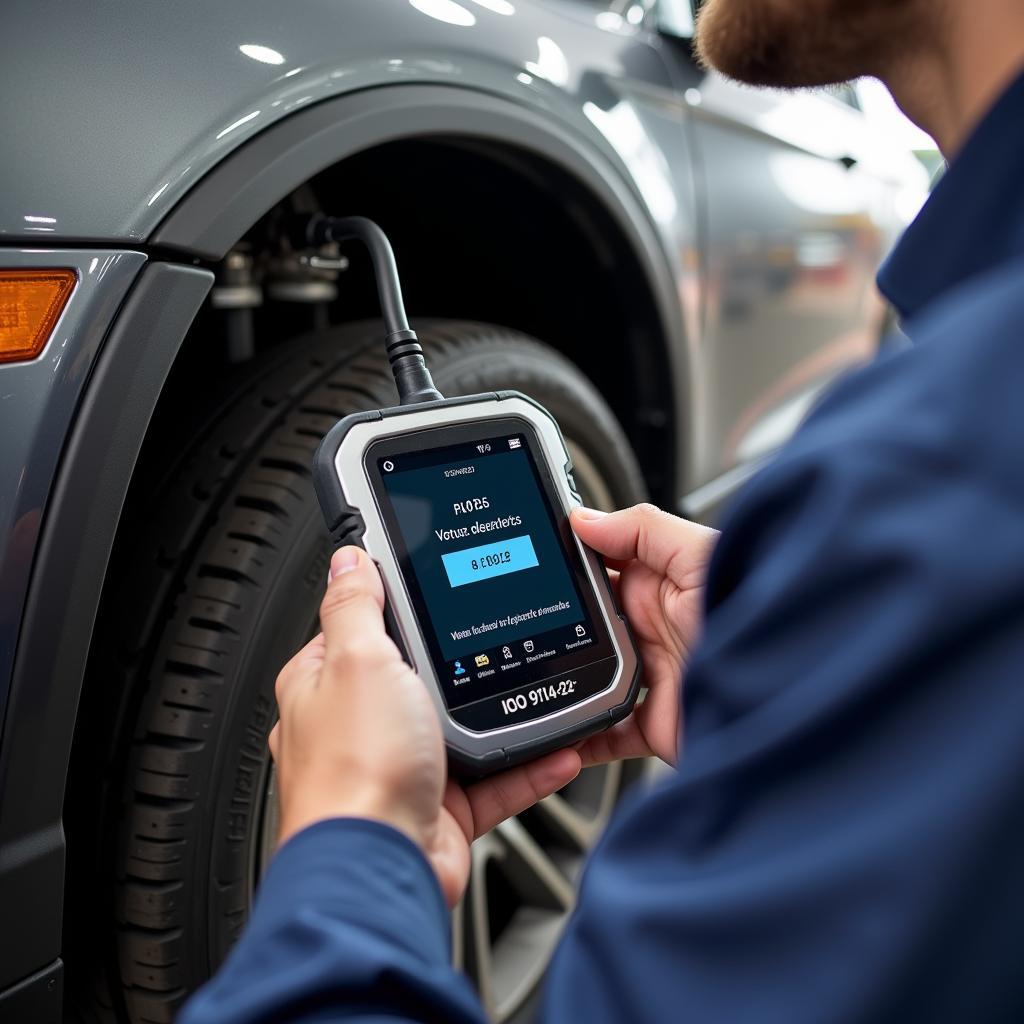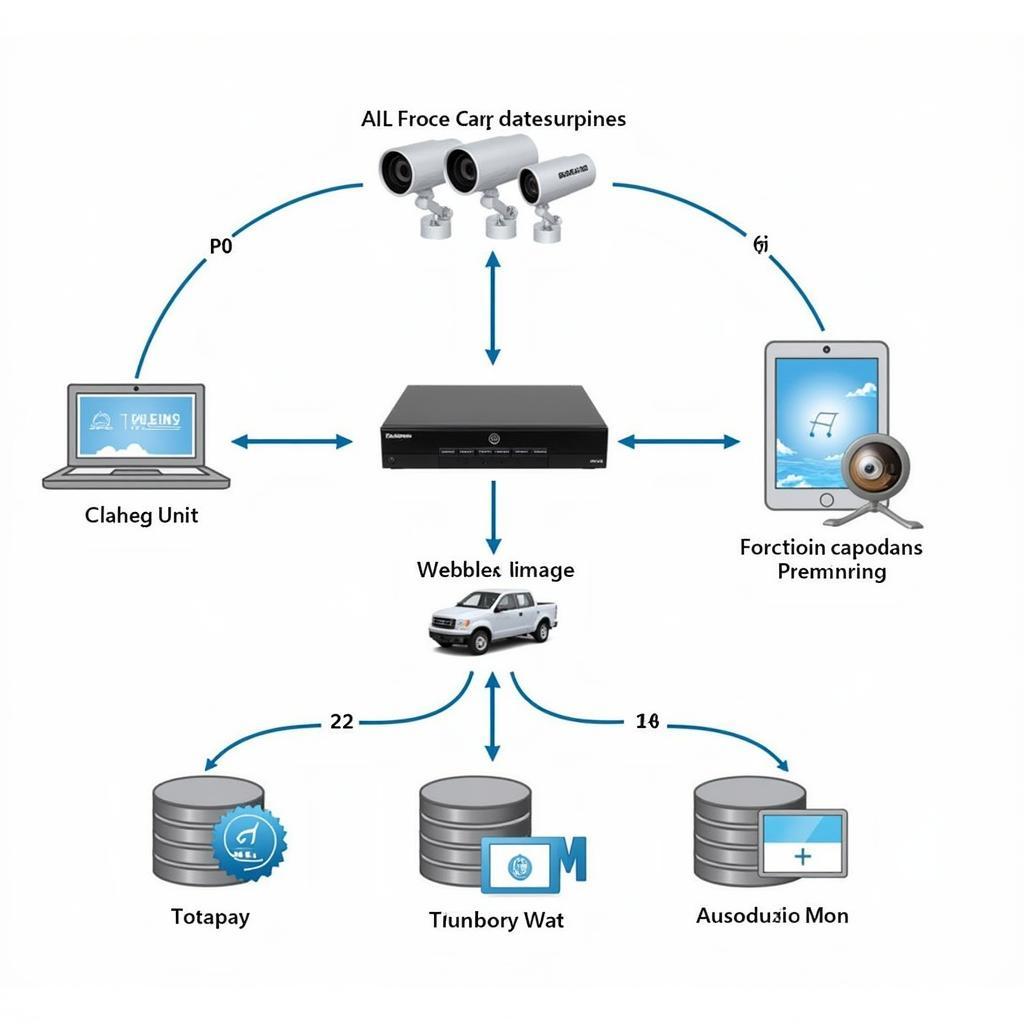The Iso 9141-2 Scan Tool is a crucial piece of equipment for diagnosing car troubles in many older vehicles. This article will delve into the intricacies of this communication protocol, exploring its functionality, benefits, and how it aids in pinpointing vehicle issues. Understanding this protocol can be invaluable for both car owners and professional mechanics alike.
As technology advanced, so did the methods of communicating with a vehicle’s onboard computer. Before the widespread adoption of OBD-II, various protocols existed, and ISO 9141-2 was one of the dominant standards, particularly in European and Asian vehicles manufactured before 2008. This protocol facilitated communication between a scan tool and the vehicle’s electronic control unit (ECU), enabling diagnostics and troubleshooting. Having a solid grasp of how the ISO 9141-2 scan tool works can empower you to better understand your vehicle’s health and make informed decisions about repairs. Wondering about how to access your car’s computer system? See our guide on electronic scanner to enter a car.
What is ISO 9141-2 and How Does It Work?
ISO 9141-2 is a serial communication protocol used for diagnostics in vehicles. It uses a single K-line for bidirectional communication between the scan tool and the ECU. Data is transmitted in a specific format, allowing the scan tool to request information from the ECU, such as diagnostic trouble codes (DTCs), sensor readings, and other operational data. The ECU then responds with the requested information, enabling the user to identify the root cause of various vehicle problems.
Understanding the specific data transmission format used by ISO 9141-2 is key for accurate diagnostics. The protocol uses a specific baud rate and message structure to ensure proper communication. The scan tool sends requests to the ECU, and the ECU responds with the appropriate data.
## Benefits of Using an ISO 9141-2 Scan Tool
Utilizing an ISO 9141-2 scan tool provides several significant advantages, particularly when dealing with older vehicles. It allows for precise identification of DTCs, which pinpoint the specific system or component causing the issue. This saves valuable time and money compared to traditional troubleshooting methods. Moreover, accessing real-time sensor data provides a deeper insight into the vehicle’s operational status, enabling proactive maintenance and preventing potential problems.
For individuals looking to improve their car maintenance skills, or professionals aiming to provide thorough diagnostics, an ISO 9141-2 scan tool is an invaluable asset. It empowers users to take control of their vehicle’s maintenance and avoid unnecessary guesswork in diagnosing problems. Think you might need a different type of scan tool? Check if your car scanner is compatible with OHP OBD2 adapter.
 Mechanic Using ISO 9141-2 Scan Tool
Mechanic Using ISO 9141-2 Scan Tool
Choosing the Right ISO 9141-2 Scan Tool
When selecting an ISO 9141-2 scan tool, consider factors such as compatibility with your specific vehicle make and model, functionality, and user-friendliness. Some scan tools offer advanced features like live data streaming, graphing, and data logging, while others provide basic code reading and clearing capabilities. Choose a scan tool that aligns with your needs and technical proficiency. Interested in different scan tool protocols? Explore more about ALDL scan tool protocol number.
“A quality ISO 9141-2 scan tool is a worthwhile investment for any serious DIY mechanic or professional technician,” says Alex Thompson, Lead Automotive Engineer at AutoDiag Solutions. “It significantly reduces diagnostic time and allows for precise identification of issues, saving both time and money in the long run.”
Troubleshooting Common Issues with ISO 9141-2 Scan Tools
Occasionally, you might encounter issues when using an ISO 9141-2 scan tool. Problems like communication errors, inability to read codes, or incorrect data readings can occur. Ensure the scan tool is compatible with your vehicle, the connection is secure, and the vehicle’s ignition is in the correct position. Consulting the scan tool’s manual or seeking professional assistance can help resolve these issues effectively. For regional-specific information, check out New York car scanner frequencies.
Conclusion
The ISO 9141-2 scan tool is a powerful tool for diagnosing vehicle problems in older car models. Understanding its function and capabilities can empower car owners and mechanics to effectively identify and address issues, saving time and costs associated with repairs. By selecting the appropriate scan tool and troubleshooting common problems, you can leverage this technology to maintain your vehicle’s optimal performance. If you need expert advice or assistance with your automotive diagnostic needs, connect with us at ScanToolUS. Our team is ready to help you find the right tools and solutions.
Contact us at +1 (641) 206-8880 or visit our office at 1615 S Laramie Ave, Cicero, IL 60804, USA.

